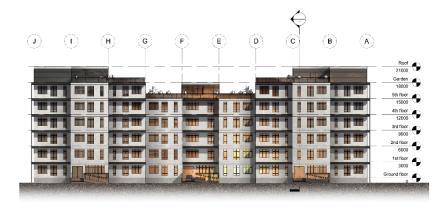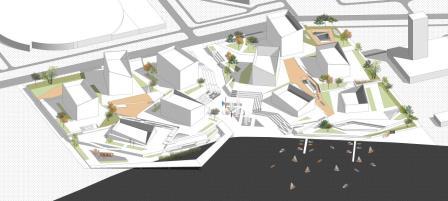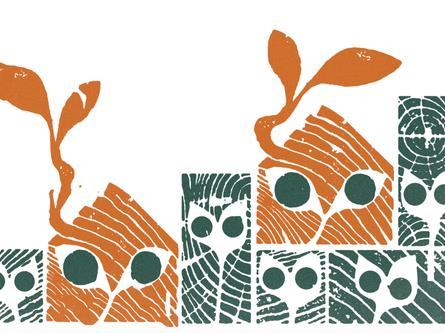Hybrid Education & Smart Learning, Innovative Teaching in the Post-Coronavirus Era
presented at the IV All Russian Scientific and Practical conference "Digital transformation as a vector of sustainable development", held on December 9, 2021 in Kazan, Tatarstan, Russian Federation.

Abstract:
The educational science has evolved over time, especially by virtue of the use of new ICT technologies for learning. Even the internal layout of the classrooms is undergoing a transformation in consideration of the fact that today we tend to work in a team and to bring out the intrinsic personality of each individual. To all this are added the provisions deriving from the pandemic, which imposed distance learning as a solution to the problem. Now, in the post Covid era, we must capitalize on the experience acquired in order to generate new types of education, based both on pedagogical innovations and on those of new generations of technological systems for the acquisition and sharing of knowledge. To this end, it was decided to adopt a "hybrid" and "smart" educational system, capable of combining face to face and remote training and developing a teaching method to share and spread the culture of knowledge in a conceptually creative and socially oriented way. From a purely technological point of view, systems have been developed, so they will be able to help all the "actors" of the teaching chain
RICOSTRUIRE - YEAR XLIV - No. 3-2021 – Page 2
*************************************************
Prof. Franco Claudio Grossi
(student teachers, specialists, researchers, business executives, etc.) to interact in a totally flexible environment, equipped with laptops, large screens, virtual reality and augmented reality devices, up to and including chatbots with Artificial Intelligence and Machine Learning. The implementation of this work plan was possible with the use of existing innovative technologies and, of course, could increase the strength of KIU in the field of education.
1. DESCRIPTION
The purpose of this work is to examine the situation of educational processesinthepreandpost Covid-19era,foreseeing innovationsinteaching / learningmethodologies,assistedbynewICTtechnologies andthis also from the point of view of the interior design of the classrooms.
In particular, we refer to the pragmatic educational proposals, enunciated by two pedagogues who lived between the nineteenth and twentieth centuries, Maria Montessori [1] and John Dewey.
Dewey himself emphasized the "active" role of educational institutions. The method he suggested is aimed at making the student acquire an "operational intelligence" [2] and this in the context of specific groups and workshops aimed at developingskills invarious sectors.
Dewey proposed a "progressive educational activism", such as to allow the student to gradually overcome obstacles and difficulties and this by developing personal strategies.
Fromamethodologicalpointofview,incarryingoutthedesignofthis"theoretical practical"trainingcourse,themethodologiesoftheergonomicsdisciplinewereused [3].
Inthisregard,itshouldbenotedthatthefieldofinvestigationofapplied ergonomics (User-Centered Design, Interaction Design, etc.) also deals with activities aimed at the practical realization of classrooms and it is that type of project that is preferable to apply in the design process, in ordertomakeitmoreusableandenjoyableevenbystudentsofdifferent backgrounds.
The ergonomic principles, highlighted by precise ISO standards [4], require, in fact, both a design of the classrooms oriented to the needs of the students, and a systemic approach on the part of the teacher.
Therefore, a student-centered teaching, which includes the interdisciplinary nature of the courses, the promotion of team work activities, the use of no more than a single classroom, but a network connection between teachers, students and with external influences (case histories, business leaders, etc.).
This innovative technological proposal then provides for the use of new learning systems, capable of assisting each student and attracting his attention, through perceptual processes capable of involving his cognitive processes and this bothinreal and virtual mode.
In particular, it was decided to develop a hybrid network technology, in order to make different "actors" interact in the educational process, both in presence and at a distance, until reaching an "intelligent" type of teaching, able to involve the students with virtual reality, with multiple screens and direct connections with companies and externallaboratories.
2. TRADITIONAL TEACHING CLASSROOM.
The "old fashioned" classrooms [5] (pre Covid 19) were structured to carry out "one to many" lectures. Normally the teaching took place in a single environment, where the teacher interacted frontally with a multitude of students and with few opportunities for interaction. The teacher's task was to make students receive "content".
Furthermore, the internal design of traditional training classrooms was not suitableforintegrationwith modern teaching technologies. In short, a general design of the spaces was lacking, oriented towards a future vision, also because the IT and audiovisual tools have always remained technological bodies “external” to the interior design of the classrooms.
RICOSTRUIRE - YEAR XLIV - No. 3-2021 – Page 3
Figure 1. A Traditional/Old Style Classroom.

3. THE HYBRID EDUCATION CONCEPT.
In this project, it is a question of structuring an "intelligent" classroom, which is networked with the other locations of the University, with students who learn at a distance and with external realities (experts, managers of institutions, sector managers, etc.).
All this is made possible using a remote interactive network system, thus allowing the sharing of teaching resources between different study rooms, different academic campuses and different regional realities. So, not only the teacher will be able to interact with the students, but also the students among themselves, sharing screens. All students will be able to view the resources and materials of the courses, receive per-

sonalized feedback from the teacher, integrate the theoretical classrooms with classrooms /practical laboratories, in order to be able to use all the teaching methods in an integrated and shared way.
Figure 2. An example of a hybrid network classroom.
The goal is to design an "intelligent" type of teaching, capable of responding to those needs of effectiveness, efficiency and pleasure, which are also typical of ergonomic design and which will make teaching easier and more usable.
The distribution of the didactic spaces is redefined by eliminating the traditional podium, placed at the back of the classroom, in order to allow the teacher to interact directly with the students, who will collaborate in group projects and with classroom discussions.
Theteacherwill maintainhis roleas organizerand guidein theteaching process, assisted by a giant screen, "multiple touch all in one" laptop and tablet, interactive systems for the integration between mobile phones and tablets, able to fully satisfy the educational needs of group discussions and information sharing.
RICOSTRUIRE - YEAR XLIV - No. 3-2021 – Page 4
Figure 3. An example of a Smart Classroom.
In short, it is a question of developing a new training methodology of the "learning by doing" type [6], identifying, from time to time, a common denominator, which allows the study / work group to enhance what has been learned in the classroom and respect the peculiar aspects of different cultures and idioms in the context of social and working life, in order to achieve a shared result.
It would be interesting, for example, to consider the thoughts of students attending foreign universities, giving everyone the opportunity to share their communication knowledge and experiences. So,everyonewouldbeabletousethisinformation,feelinganintegralpart of a group with common educational goals [7].
With this type of education, the traditional way of presenting multi-type educational content has been completely changed and the technological system is able to support this complex teaching process.


For example, amulti windowpresentationsystem will beimplementedin the big screen, driven by a high performance graphics workstation. This innovative educational typology is able to implement the visualization and comparison of a large variety of educational resources and contributions from multiple "actors", allowingthe shared development ofdifficult and complex problems, optimizing the presentation of educational content and deepening the knowledge of students.
Figure 4. A multi-window presentation system.
Continuing in the description of innovative teaching classrooms, always in the key of "smart education", we can represent an "intelligent" type, which aims to provide an interactive space for educational activities, through the combination of physical space and digital space, and combination of local and remote.

Figure 5. Smart Education, a Classroom.

RICOSTRUIRE - YEAR XLIV - No. 3-2021 – Page 5
In this case, a "contamination" is established between tangible physical space and immaterial digital space, proposing the representation of didactic contents through different intelligent devices, which help to facilitate learning and favor the sharing of contents and group interaction in the classroom.
All this is implemented using large interactive touch screens and devices for virtual reality [8] and augmented reality [9].
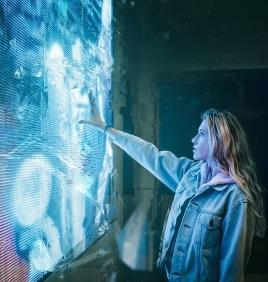

With these devices it will be possible to present three dimensional teaching material in distinction (for example, to compare organs before and after a disease), up to the presentation on the same screen of manipulation processes [10].
using new interior design provisions, in full compliance with the concept of ergonomic usability (ISO 9241: effectiveness, efficiency, pleasantness).
All currently available devices (IoT, AI, VR, AR, Big Data, etc.) will be used on the basis of a "smart" technology and equipment, enhancing new teaching and research and promoting the updating of educational information.
All of this could certainly make KIU the most innovative university in Tatarstan and one of the most innovative universities in the Russian Federation.
6. ACKNOWLEDGMENTS
First, I would like to express gratitude to the engineers from Lenovo, Beijing, who gave me the idea of writing this document. Also, I would like to thank all the researchers at Intel, Microsoft Teams, Google Meet and Zoom whose guidelines advised me how to proceed in this report.
7. REFERENCES
Figure 6. Virtual reality and augmented reality.
One final note concerns the use of chatbots. A Chatbot is a bot (Robot) designed to converse with humans [11].
In other words, Chatbots are computer programs created to simulate human conversations on a website, messaging app, or virtual assistant. In its simplest form, chatbots can be programmed to answer specific and frequently asked questions, providing an easy way to interact with students.
4. CONCLUSIONS
The development of an innovative "hybrid" and "smart" teaching methodology, both in terms of teaching and learning methods and in terms of new ICT technologies, involves today the entire "educational chain".
In fact, it is a question of completely redesigning the classroom spaces,

[1] Montessori M., To educate the human potential, Published May 1st 1989 by ABC CLIO Ltd (first published 1947) Santa Barbara CA, USA, ISBN 978-1851090945.
[2] Dewey J., My Pedagogic Creed (1897), https://en.wikisource.org/wiki/My_Pedagogic_Creed
[3] McCauley Bush P, Ergonomics, CRC Press, Boca Raton FL, USA, ASIN: B00DHKPTEC, ISBN: 978 1439804452
[4] The International Organization for Standardization (ISO) takes due consideration the fundamental principles of ergonomics as basic guidelines for the design of work and educational systems, e.g.: ISO 6385, ISO 26800, ISO 9241 series, ISO 24500 series, ISO 29241 series, ISO 7250 series, etc.
RICOSTRUIRE - YEAR XLIV - No. 3-2021 – Page 6
[5] Greene G., The Old School, Oxford University Press, August 1, 1984, originally published: London: Cape, 1934, ISBN 978 0192814845
[6] Dewey J., Experience & Education, Simon & Schuster, New York, NY, USA, 2008, ISBN: 978-0684838281 (first edition by Kappa Delta Pi Indianapolis, IN, USA, 1938, ISBN 0-684-838281)
[7] Grossi F.C., Practical projects within university training courses in Applied Ergonomics / Практические проекты рамках университетских курсов по прикладной эргономике, in Journal of the Interdepartmental Center for Educational Research of the University of Trieste, No. 21/2020, University of Trieste Press, ISSN: 2039-8646, DOI: 10.13137/2039-8646/32083, Pages 73 92.


[8] https://en.wikipedia.org/wiki/Virtual_reality



[9] https://en.wikipedia.org/wiki/Augmented_reality
[10] https://www.autodesk.com/solutions/virtual-reality

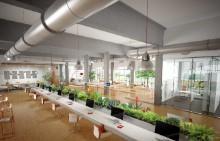
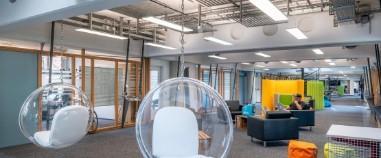


[11] https://www.merriam-webster.com/dictionary/chatbot
The Business Warfare School, Kazan, Russia
presented at the Congress " Future strategies in the context of digital transformation", held in Kazan, Russian Federation, on October, 22nd 2020, invited by the Innovative Marketing Dept. of the University of Innovation, Kazan, Russia.
Prof. Franco C. Grossi
Figure 1. Tips for startups in Tatarstan.
RICOSTRUIRE - YEAR XLIV - No. 3-2021 – Page 7
********************************************************
This project was born in order to satisfy the need, now no longer postponable, as regards the creation of new SMEs in Tatarstan, taking into consideration the fact of having to operate today, in a global market, extremely liquid and fluctuating, but being placed at an advantage by the Internet.
Figure 2. Economy oil based
For too many years, in Russia, the extraction of raw materials (e.g. oil) has been favored, to be sold on international markets, in order to obtain the capital necessary to meet the needs of products for the population, which are however imported without promoting one's own business culture, aimed at enticing young people to become "entrepreneurs" and therefore produce at home.




Furthermore, large Russian companies often make "non-exportable" products, as they do not meet the "Western" quality criteria.
Figure 3. Factories must be innovated
Then, "foreign" settlements were privileged, with the wording "invest", which, if on the one hand contribute to the creation of jobs, on the other hand, absolutely do not contribute to bringing entrepreneurial knowhow within the nation.
Figure






4. Indicators of the Russian economy 2020
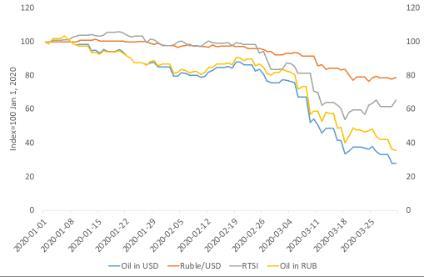

RICOSTRUIRE - YEAR XLIV - No. 3-2021 – Page 8
After a growth of just 1.3% in 2019, the Russian economy is expected to contract by 6.3% in 2020, due to a double blow due to the social distancing measures resulting from the coronavirus, and the shock of the global oil price.
Both falling oil prices and falling oil demand are hitting the Russian economy hard, as oil and gas exports account for 55% of total exports and about 40% of federal government revenues.
Figure 5. Loss of the ruble exchange rate
As a result, the value of the ruble is experiencing a sharp depreciation, which could however be contrasted with a net inflow of foreign exchange following an intense campaign for a mass starting of new companies capable of exporting their products.
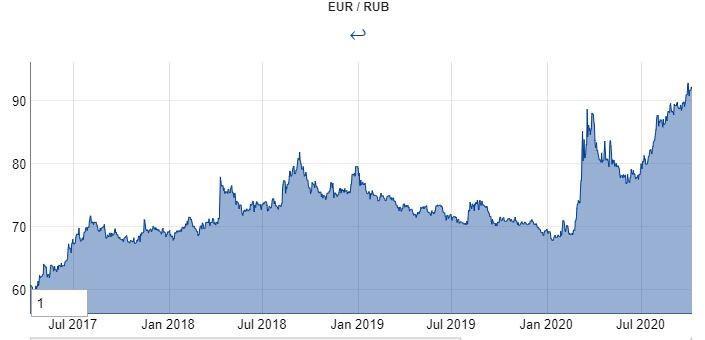
Figure 6. Maslow’s Hierarchy of Needs


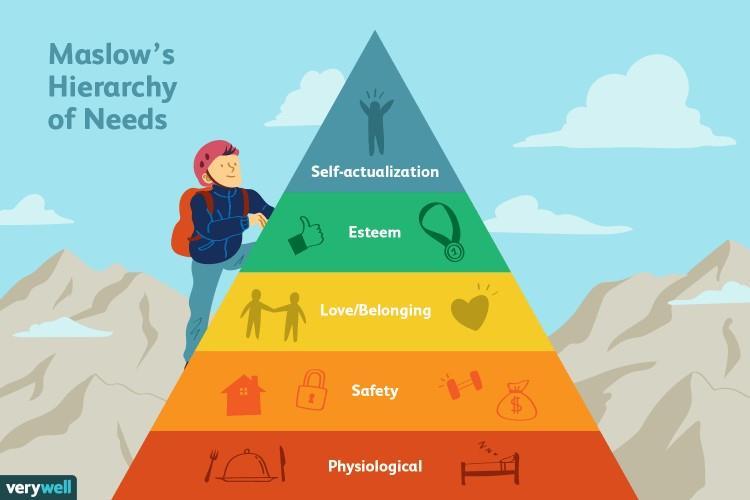



Today, the problems that grip young people willing to emerge, are essentiallylinkedtothelackofa"School",which,throughadequatetraining, motivates them to "set up a business", stimulating them to the personal success they could obtain in society and the consequent contribution of GDP and employment, which could lead to Tatarstan and to the Russian Federation.


Therefore, this project is intended to encourage the birth of new SMEs and to foster their ability to internationalize their production and this, using suitable strategies and tactics of a "business warfare".
The suitable tools will be identified to produce innovation especially as regards the enhancement of the corporate brand (communication, marketing, sales), in order to be able to identify those competitive advantages, which allow you to always settle in higher positions in the market.
RICOSTRUIRE - YEAR XLIV - No. 3-2021 – Page 9
Figure 7. Need for lifelong learning
Furthermore, young people will have to understand that the diploma (for example the always longed for "degree") is no longer an "end", but only the means (and only if "provided" with adequate skills) to access the "world of work ". In other words, we are witnessing the decline of school certifications as "qualifications" valid for life, to the advantage of the ability to implement "competent" behaviors ("real" skills) in real situations and this, through a "lifelong learning" program. As regards, then, the numerous attempts to launch "start-ups", which in the West have been almost 90% unsuccessful, it must be said that universities and university professors are unable to act as entrepreneurs, however, they are able to provide young people with guidelines for becoming one. The present initiative will include both a training course and a practical value and the work plan will focus not only on theoretical bases, but also and above all on specific practical projects, also concerning the diffusion of the brand "Made in Tatarstan" (or "Made in in Russia "), all for a concrete internationalization.


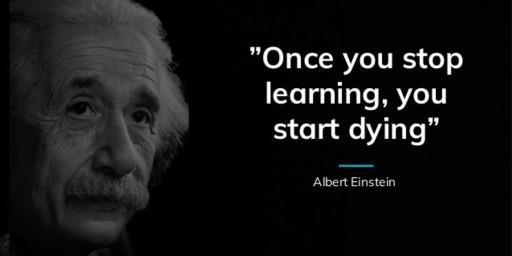
Figure 9. Mobile and Flexible workers







RICOSTRUIRE - YEAR XLIV - No. 3-2021 – Page 10
Figure 8. The Business Warfare School
Thegoalistobuildabusinessmodeltogether,whichmakesinnovation, ethics, creativity and sustainability its strengths, contributing to incessantly increasing its value chain in a continuous search for new competitive advantages.

The new entrepreneurs of the Third Millennium should operate in a mobile and flexible way, be characterized by an intellectual dynamism, which allows them both to proceed with the solution of problems, and to always achieve new results and this by making available to them a permanent training process, which does not it ends with the end of their studies, but that it is projected throughout their professional life, allowing them tocontinuouslyacquirenewknowledge, attitudes andnotions.
Figure 10. The Seven Pillars








Description of the "Business Warfare School" Project
Figure 11. Personal Success





1. The Motivation to Personal Success.
The drive for success is the main motivation of this School.
Today we live in a glass house, overwhelmed by a myriad of messages and inputs, we continuously absorb the social belief in the ever more numerous contacts with others, in frequent and rapid travels, we are influenced by the "sales" pitches of politicians, by the sermons of economists, from the suggestions of the media, from the solicitations of advertising. The era in which we live is characterized by the highest rate of innovation in the entire history of humanity, where a new "industrial revolution" is made possible by the infinite opportunities offered by science and new technologies. Nothing will ever be the same again, we will be transported by car without a driver, we will communicate in languages unknown to us, we will increasingly access knowledge just a "click away" and we will be equipped with "digital superpowers".
Innovation is the workhorse of new entrepreneurs, together with the ability to communicate and offer their products globally.
RICOSTRUIRE - YEAR XLIV - No. 3-2021 – Page 11
Figure
12. The Strategy


2. The Strategy and Tactics to "Fight" into the Market




This is the central pillar of the course, in which the foundations of the war plan inside the market are developed. It starts from the nature of the market segment that you want to "attack", then moves on to the theory of the offensive, strategy, tactics, up to the "war" plan. Furthermore, it is not a question of implementing a “total war”, but limited to a small market niche; the goal, in fact, is to excel in averylimitedsegmentofthemarket. Analyzingthecurrent market, it can be asserted that the extreme ranges, "low" and "luxury", are already the prerogative of consolidated companies (respectively ChineseforthelowandEuropeanforthehigh),therefore we must refer to the medium range, which involves, anyway, the satisfaction of specific parameters, such as, for example: Safety, Quality, Ethics, Sustainable Development, Circular Economy, Green Energy, etc. From the point of view of topics, we will refer to teachings of the great "masters" of the art of war, such as: the Chinese Sun Tsu (孫子兵法 The Art of War), the Roman Julius
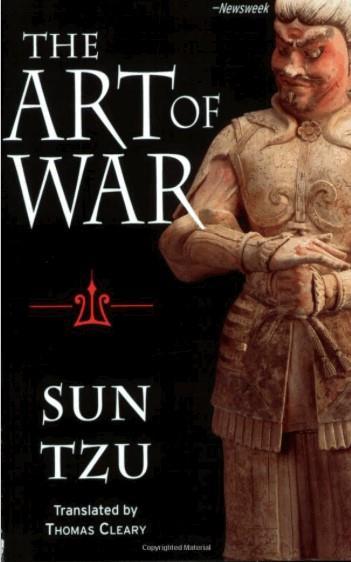




War).
Figure 13. Web Combat
A particular section of the strategy will be devoted to "combat on the Web". In short, it is a question of making students think in order to encourage them to prepare a short, medium and long term action plan, to be used to set up and coordinate actions aimed at achieving the predetermined goal.

Figure 14. The Business Management

RICOSTRUIRE - YEAR XLIV - No. 3-2021 – Page 12
Caesar (De Bello Gallico The Gallic Wars) and the Prussian Carl von Clausewitz (Vom Kriege On
3. The Business Management


Another pillar of this project involves the definition and implementation of a series of activities for the formulation of good practices on topics such as, for example: the economic-financial enunciation of the business idea, sample verification of the reference market, the business plan, the start up capital, the financial and credit instruments, the establishment of the company, the ICT technologies and the main applications for management and prediction, and so on. This pillar offers training in the various areas of entrepreneurship and management, deepening the fundamental issues, both on strictly technical areas, such as finance, marketing and economics, and on the development of personal skills, such as leadership and management.
methodologies and processes characterizing the industrial future, whether systemic processual, or systemic creative. The project thereforeintendsto encouragenewentrepreneurstoseeknewmethodological tools in order to propose an evolving mental scale oriented towards the construction of product-system maps and more articulated and performing design practices.
Figure 15. The Industrial Design



4. The Industrial Design



It is knownthat in Eastern Europethereis alackof trainingonsome professional figures connected to the world of contemporary industry; such as, for example, a designer oriented towards systemic
Figure 16. The Advance Marketing Plan
5. The Advanced Marketing Plan
This pillar identifies an innovative type of marketing concept, which would be able to overcome the problems of perception and affordance which germinate and are determined using methodologiesbasedon theproposals onanemotional level. So,theCognitive Marketing "tools" will be introduced and explained. It is, therefore, the intention of making use of the latest scientific findings related to the study of cognitive processes, to those on the generative semiotics, Gestalt psychology, applications sensory synesthetic, up to
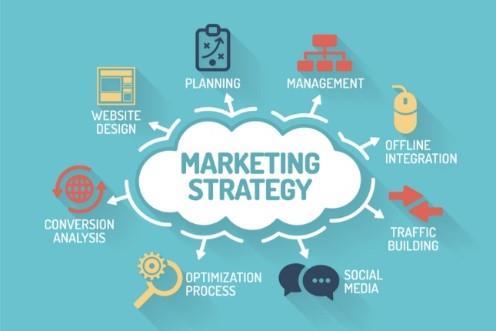
RICOSTRUIRE - YEAR XLIV - No. 3-2021 – Page 13
new studies on the evolution of the neocortex (mirror neurons, memes, etc.), in close connection with the communicative value of new media.
The path will thus become an opportunity for training development and an opportunity for scientific discussion and study for those who have already gained professional experience in this area. The goal is to make the market identify the new companies, that will be launched at the end of the "Business Warfare School", as unique, unrepeatable and immediately recognizable, capable of positioning themselves on the highest steps of a small market niche.
Figure 17. Brand Image and Communication


6. The Brand Image and the Innovative Communication Plan for Business

ThepurposesofthispartoftheSessionareaimedatcreatingatraining coursein thefield of business communicationwith lectures held by university professors, researchers and experts in the sector. The Session is aimed at new entrepreneurs, who intend to deepen those issues, typical of the Communication Sciences, necessary for strategic choices in business management and within the internal and external interrelationships of the company. In this perspective, we will tend to prepare motivated people, who take part in the process of conception, formulation and governance of the brand communication (tangibleandintangible)andoftheinterrelationships thatexist between the actors of the production chain, customers and institutions.
Figure 18. The Business Plan
7. The Business Plan



This is the final pillar of the whole "Business Warfare School", which must summarize all the acquired knowledge and express the entrepreneurial vision.
In addition to the "classic" topics, proposals based on the knowledge economy and the use of values will be highlighted, which also involve the promotion and management of intangible balance sheet items, such as, for example, human resources, relational capital, brand heritage, ethics and sustainability.


RICOSTRUIRE - YEAR XLIV - No. 3-2021 – Page 14
The process of study for the realization of the business plan by future young entrepreneurs has been studied with a view to an educational animation delivered in a shared way.
This last pillar of the "Business Warfare School" involves the formulation of a teaching which advocates "doing business" in the legality and based on ethical values, in the rigor of the single social role and in the awareness of contributing to the growth of the local and the national economic system.
TheveryfirstLondonFestivalofArchitecture–thenknownasthe Architecture Biennale – lasted ten days. Its central focus, based around Clerkenwell, soughttoillustratehowthepastdetermines thefutureTheprogrammeincluded lecturesand talksfrom Zaha Hadid, Peter Ackroyd and Dejan Sudjic, exploring topics that remain relevant today such as “Gentrification v Regeneration”. But the highlight was definitely a cattle drive down St John Street to Smithfield market, bringingthousandsofLondoners youngand old–outoftheirhomesandintothecity
Here the themes of all the editions
The next edition 2022: Act
The London Festival of Architecture

After such as long time of enforced passivity, the imperative to act is felt by so many of us, whether we are architects or not, while the pandemic has exposed so many things that need to change. How, for instance, should architecture act in the face of the climate emergency, socialinjusticeandtheneeds ofa changing society?How can architects make their actions felt beyond their profession how can they be heard more clearly, become more valued or collaborate more meaningfully?
TheLondonFestivalofArchitecturebeganin2004,andattractsa vastpublicaudience.Thevastmajorityofeventsarefree,andare stagedbyacorefestivalprogrammingteamworkingalongsidearchitectureanddesignpracticesandpractitioners,leadingcultural and academic institutions, artists and many others. In 2017 the London Festival of Architecture was named by Mayor of London Sadiq Khan as one of his design advocate organisations, and is working alongside the Mayor’s team to champion architecture, provideexpertiseandguidance,andhelptomakeLondonabetter city. The London Festival of Architecture is organised and deliveredbytheNewLondonArchitecture(NLA).
2021 Care
Forarchitects,‘care’meansmanythings.Atabasiclevel,architects designbuildingsandobjectsofcare.Butwhatdoes‘care’meanfor architects,civicleadersandthepublic?
From inaccessible playgrounds to sometimes outright hostile design,itsometimesseemsthere’sadistinctlackofcareinourbuilt environment.Didittakeaglobalpandemictohelpusrealisewhat wecaremostabout?Throughthefestivalweexaminedhowwecan better care for ourselves, each other, our cities and the environment.
Atatimewhentechnologyisbothconnectingusanddividingus, the pandemic showed us that we need to find ways to reconnect
RICOSTRUIRE - YEAR XLIV - No. 3-2021 – Page 15
********************************************************
witheachother,tobuildcareandempathy.For2021weharnessed thebestofreal-worldeventswiththeaccessibilityofdigitaltocreateahybridfestivalincludingbothphysicalanddigitalevents allowing more people to participate in more ways and in more places.
2020 Power
Our theme for the 2020 festival was ‘power’. For the first time we hosted a new online festival LFA Digital throughout June 2020. Whilst we were online, not everything was on a screen. Thebasicprincipleofthefestivalremainedthesame:oureventswereorganised byanamazinglyeclecticcommunityofpeople,groupsandorganisationswhocareaboutthearchitectureofourcity.
Fromcakebakingcompetitionstoarchitecturaltherapy;drawing workshopstoLegochallenges;paneldiscussionstopodcasts;virtualbuildingtourstooutdooraudioguides oureventorganisers created many ways to help you see architecture in new ways. Online!
And then throughout the autumn, in a seemingly all too brief pause between lockdowns, we held our Festival Season – with manyphysicaleventsthatweweren’tabletodeliverinJune.
2018 Identity
Churchill recognised the connection between architecture and identity when he said ‘we shape our buildings and afterwards our buildings shape us’. Whether you were born here or have just arrived, you can call yourself a Londoner but what is it that makes a Londoner? What defines the city and therefore the identity of those who live in it?
Our2018themeof‘identity’wasthewellspringforalivelyanddiverseprogrammeofmorethan530eventsorganisedbymorethan 300separate organisationsand individuals helpingusreachan audienceoverwellover600,000people.
We launched our hugely influential #SeeTheElephant campaign, expanded our year round competitions programme and held our
first symposium at the Royal Academy, helping us explore our themeinamorerigorousway
2017 MEMORY
LFA2017 broke all records to become the largest festival to date with over 600 events attracting over 400,000 people. Our “memory” theme acknowledged London as a city of myriad layers of memories: of people, buildings, places and experiences. Festival highlights included the award-winning Dulwich Pavilion by if_do (the result of a design competition organised in partnership with the DulwichPictureGallery),aworldpremiereofnewchoralworkin adisused Royal Docks warehouse, exclusive tours of Battersea Power Station, family workshops at the National Gallery, and the UK’s first ever ‘live listing’ with Historic England.
We also launched ground breaking new research at MIPIM 2017, revealing the huge economic value of London’s architecture sector for the first time.
2016 Community
With a full-time festival team in place for the first time, LFA2016 was the biggest to date with 356 events celebrating the theme “community”. Coinciding with a divisive Brexit referendum campaign and outcome, the LFA programme explored architecture’s power to bring people and communities together.
Highlights included a festival of refugee art and culture, a very popular Pridebreakfast forLGBT+architects, alecture by Turnerprize winners Assemble and an extraordinarily competitive Lego Challenge at the Royal Academy.
The festival covered a huge range of issues from housing to community cohesion in the face of enormous change across the capital.
YEAR
RICOSTRUIRE -
XLIV - No. 3-2021 – Page 16
2015 Work in progress
In 2015 the LFA looked at the city as a work in progress, with the architectural community questioning a city in a constant state of change and regeneration.
Architectural photographer Paul Raftery discussed how technology has changed the way we view the built environment, and Will Alsop, Munira Mirza and Alison Wilding debated how policy and design can encourage creative pace to thrive in cities. ThefestivallookedbeyondLondonandintothefuturetoo:withaseries ofpavilions by Irisharchitects andthought provoking discussion onthe future of the profession.
2014 Capital
The 2014 festival explored London’s historic and modern architectural landmarks.
Londoners and visitors were taken on walks round the Gherkin and Centrepoint, jogging tours of the Olympic Fringes, sunset boat trips down the Thames, and nostalgic rides on a Routemaster through London’s streets.
Headlining debates involved many big names in London and architecture, questioning whether London really needs so many tall towers. Animpressiveline up of speakers throughout the festival includedWill Self, Yinka Shonibare, Ian Martin, Patrick Keiller and Lisa Jardine.
2013 A time for architecture
Now an annual event, the London Festival also looked beyond hub areas, focusing on the whole city for the first time. An eclectic programme included a train tour of stations built in the 1930s, a cycling tour of Brutalist London, an exhibition of architectural models from around the world, and an exploration of London’s “Lesser Known Architecture”. A standout highlight was Leandro Erlich’s Dalston House a Barbican commission where a reconstructed Victorian terrace façade and a large suspended mirror played optical tricks on participants and passers-by.
2012 The Playful City
Over the course of three weekends, the London Festival of Architecture’s fifth outing harnessed the excitement leading up to the 2012London Olympics, and explored how the Olympics were changing the city. The festival was concentrated on Hoxton, King’s Cross, Fitzrovia, Victoria and Southwark, with exhibitions and installations also exploring the concept of “The Developing City” while open studios sprang up all across the capital. The playful theme encouraged offices to clear their desks, heading out instead to play giant games of ping pong or enjoy huge picnics on specially-closed roads.
2010 The Welcoming City
The 2010 festival explored three key areas of London in turn. The first weekend focus on the Nash Ramblas connecting Regent’s Park and St James’s Park recreated a historic route with highlights including Matthew Lloyd’s water/solar powered lift on Duke of York Steps and the debut of Regent Street Windows now a London staple in their own right. The second weekend focused on Aldgate to Stratford, and featuredspeechesbyMayorKenLivingstoneand Rafael Vinolyastraffic closures creates new space for Londoners to relax. The final weekend on Bankside revealed an Urban Orchard, a solstice bike ride and at last Dogs For Architecture.
2008 Fresh
Offering “fresh thinking, fresh ideas, fresh talent, fresh collaborations and fresh cultures”, the 2008 festival saw sell out talks from international names including Daniel Libeskind, David Chipperfield, Rafael Vinoly, Cesar Pelli, Rem Koolhas and Peter Ackroyd, alongside new structures and installations from practices including Foster + Partners and Carmody Groarke. Featuringfivehubsacrossthecityandfive weekends,thefestivalstretcheditsambitionsfurther,withExhibitionRoadclosedtotrafficforthefirsttimetoshowcasenewwork andfuturepossibilities:intimeleadingtopermanentclosureand alastinglegacyforthefestival.
RICOSTRUIRE - YEAR XLIV - No. 3-2021 – Page 17
2006 Change
For its second appearance, the festival covered the notion of change, celebrating both the transience and consistency of London life, an exploring the junction of rural and urban. Featuring highlights such as the LondonOasis asculptural pieceresponding to its environment, aphotography exhibition of subterranean London by Alan Williams, pecha kucha at Sadlers Wells, and speeches by Renzo Piano and the then newly elected Mayor Boris Johnson. Animals featured once again, as Richard Rogers and Renzo Piano driving 60 sheep across the Millennium Bridge surrounded by over 15,000 Londoners provided an enduring image for the festival.
2004 When the festival was a biennale
The very first London Festival of Architecture then known as the Architecture Biennale lasted ten days. Its central focus, based around Clerkenwell, sought to illustrate how the past determines the future The programme included lectures and talks from Zaha Hadid, Peter Ackroyd and Dejan Sudjic, exploring topics that remain relevant today such as “Gentrification v Regeneration”. But the highlight was definitely a cattle drive down St John Street to Smithfield market, bringing thousands of Londoners young and old out of their homes and into the city.
The Museum of Finnish Architecture looks for hope in wood.
TheMuseumofFinnish Architecture’smainexhibitionthisautumnand winter, Hope from Wood (10.9.2021 10.4.2022), looks at wooden architecture from theperspectiveofthehope it inspires. Themulti voiced and multi-faceted exhibition brings together an interesting group of contributors addressing the exhibition theme in the form of, for instance, love letters, videos and music. The time span extends from the
early achievements of wood construction to the architecture of the future produced by artificial intelligence. In the era of climate crisis, much is expected from wood. One building material hardly solves all thechallenges of building construction,but it is the sparkthathopefully ignites a debate about major change. In Finland there are more than 800 places with the name “Toivola” (toivo = hope) villages, farms and houses, most of which are built in wood. Preserving the existing building stock is an expression of love for the built heritage, but also of climate wisdom. The exhibition looks for inspiration for contemporary construction from the treasure trove of the past, as well as answers to the questions of what and whose hope has been placed in wood at different times in history. The love letters to the built heritage featured in the exhibition that are written in different parts of Finland provide a tangible example of how people and communities have become attached to the old building stock and are committed to its preservation. Over the last decade, wood has begun to appear more often among the prize winners in architectural competitions as well as other award ceremonies in the building profession. Several wood clad landmark buildings have been built in the capital of our forest covered nation. New types of wood construction have spread throughout the country in the form of schools and day-care centres. Hopefully the construction of wooden apartment buildings will increase, but a chasm still exists between hope and reality. The exhibition asks why this is the case. As the climate crisis deepens, wood is being shouldered with the role of saviour, as the use of wood reduces the carbon footprint in building construction. A single material, however, cannot solve all the challenges we face. The exhibition highlights how architects, as well as the entire construction industry, can have a say in what kind of future we are heading for. The future is explored in the exhibition in diverse ways. What, for example, could be a song for the architecture of the future? What kind of wood construction do architecture students hope to realise? And what kind of dream does artificial intelligence have about tomorrow’s wooden architecture?
RICOSTRUIRE - YEAR XLIV - No. 3-2021 – Page 18

